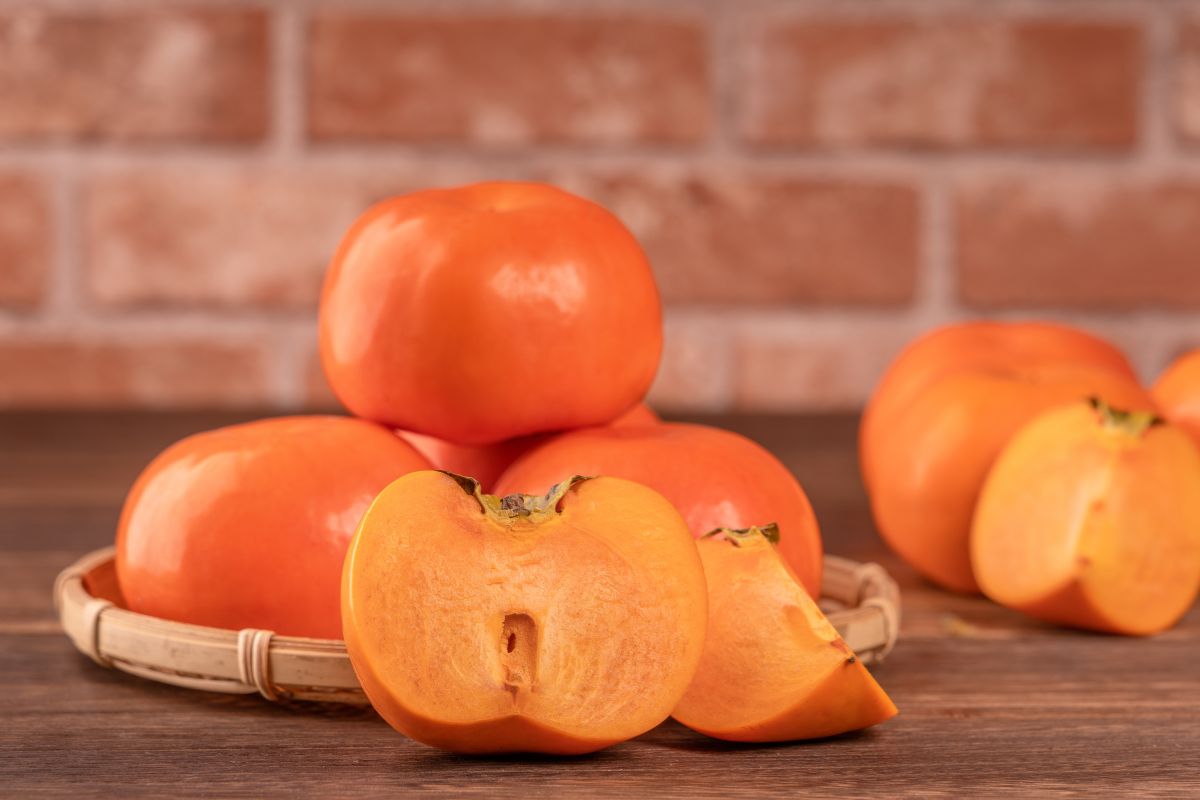The Persimon, a vibrant orange fruit that graces the autumn harvest, boasts a rich history and a flavor profile that can surprise and delight the uninitiated. Often shrouded in mystery due to its unique astringency, this article delves into the world of it, exploring their fascinating origin, diverse varieties, culinary versatility, and impressive nutritional content.
A Journey Through Time:
The Persimon journey stretches back millennia, with its origins traced back to ancient China over 2,000 years ago. Cultivation then spread throughout Asia, and today, China remains the world’s leading producer of Persimon. The fruit eventually made its way to Europe and the Americas, where it continues to gain popularity for its unique taste and vibrant color.
A World of Flavors and Textures:
The “kaki” Persimon is the one most people know, with its tomato-like shape and smooth, orange skin. But there’s a whole range of Persimom out there to try! Take the Fuyu variety, for instance. It’s got a crisp, apple-like texture even when it’s not fully ripe, which makes it great for all sorts of dishes, sweet or savory. Then there’s the Hachiya Persimon. It’s shaped like a heart and gets super soft and pudding-like when it’s fully ripe.
Beyond Astringency: Mastering the Ripeness:
Persimon is different from most fruits because they taste better when they’re completely ripe. When they’re ripe, their natural tartness, caused by tannins, goes away, and their full sweetness and rich flavor come out. If you have a type of Persimon called Hachiya, which is tart, you need to give it special attention. Let it get soft at room temperature or freeze it for a short time to get rid of the tartness. But if you have a type like Fuyu, which isn’t as tart, you can enjoy it when it’s a little firm, giving you a fresh and crispy bite.
A Culinary Muse:
Persimon isn’t just tasty fruits – they’re also super versatile in cooking. People who love food like using them. Sliced Persimon make salads look colorful and sweet, and they taste great with savory foods like cheese and meat platters. And when it’s time for dessert, Persimon is awesome. They’re naturally sweet, so you don’t need to add a ton of sugar to things like pies, muffins, puddings, and even ice cream.
A Nutritional Powerhouse:
Besides being delicious and versatile in the kitchen, Persimon is a nutritional powerhouse. They’re loaded with vitamin C, essential for a strong immune system and making collagen. Also, they contain lots of fiber, which helps keep our digestive system healthy and functioning well. Persimons are rich in potassium too, an important mineral that helps control blood pressure and keeps our muscles working properly. So, not only are they a tasty fall treat, but they also bring a bunch of health benefits to the table.
A Treasure Trove of Nutrients:
Persimon’s are a powerhouse of essential vitamins and minerals, including:
- Vitamin A: is essential for keeping your eyes healthy and strengthening your immune system.
- Vitamin C is a potent antioxidant that helps your body make collagen and reduces inflammation.
- Manganese: supports blood clotting, enzyme function, and wound healing. Fiber is good for your gut, helps control blood sugar levels, and assists in digestion. Potassium is necessary to balance fluids in your body and help your muscles work properly.
Beyond the Basics: Unveiling the Benefits:
The impressive nutritional profile of Persimon translates into a multitude of health benefits:
- Promotes Heart Health: The combination of fiber, antioxidants, and minerals in Persimon may help lower blood pressure, reduce inflammation, and improve cholesterol levels, all contributing to a healthier heart. Studies suggest that the tannins present in Persimon, particularly in unripe varieties, might also play a role in lowering blood pressure, although more research is needed to confirm this specific benefit.
- Supports Eye Health: The high amount of vitamin A in Persimon is crucial for safeguarding against age-related macular degeneration and keeping our vision healthy. This essential vitamin helps create rhodopsin, a protein necessary for seeing in low light and during nighttime conditions.
- Boosts Immunity: The presence of vitamin C and other antioxidants strengthens the immune system, making the body more resilient to fight off infections and illnesses. Vitamin C also plays a crucial role in collagen production, which is essential for maintaining healthy skin, bones, and tissues.
- Aids Digestion: Persimon contains a lot of fiber, which is good for keeping your digestive system healthy. Fiber helps make your stool bigger and helps it move smoothly through your digestive tract, preventing constipation and making your gut healthier.
- Potential Anti-Cancer Properties: Research shows that some substances found in this, like beta-carotene and antioxidants, could have the ability to fight cancer. These substances might shield cells from harm caused by free radicals, which are connected to different types of cancer. But, more studies are required to completely grasp how Persimon could help in preventing and treating cancer.
In conclusion,
Persimon offers a delightful journey through taste, texture, and nutrition. Their rich history and diverse varieties make them a culinary muse, adding vibrancy to dishes and desserts alike. Beyond their delicious flavor, They are a nutritional powerhouse, packed with essential vitamins and minerals that promote heart health, support immunity, aid digestion, and potentially offer anti-cancer properties. With their unique combination of flavor and health benefits, Persimon truly stand out as a fall delight with a surprising twist.
Tags: China's fruitFall FruitHealth SurprisesPersimon fruit

